More Service
Explore core Services
Inbox Zero, predictable SLAs
We run email and live-chat with SLAs that are visible, enforced, and reviewed weekly. Approved templates and a living knowledge base keep tone and policy consistent; macros and a clear tag taxonomy reduce handle time and make intent obvious. Dual-layer QA samples threads for accuracy and policy alignment, then feeds improvements back into the templates. By weeks 2–4, P95 first response sits under six business hours and resolutions land within 24–48; reopenings drop, escalations follow named paths, and exceptions carry an owner and a fix-by date. Weekly reports surface CSAT trends, channel volume, and breach notes, so staffing and hours decisions are straightforward—and performance is auditable without digging.
Structured Triage
Requests route by type and priority. A clear tag taxonomy and macros standardize intake so first responses land fast and handoffs are clean. Breaches and VIPs surface automatically; edge cases enter an exceptions queue with an owner and a fix-by date.
• Channel-specific queues (email / live chat) with targets per queue
• Tag taxonomy for intent, billing, tech, sentiment; auto-apply where possible
• Macros/templates with required variables; missing data blocked before send
• Escalation rules for billing/tech/VIP; SLA timers preserved on transfer
Knowledge-Based Replies
Policy-safe replies come from approved templates and a living knowledge base. Each template maps to clear intents, enforces required variables, and links to the relevant policy so tone and decisions stay consistent. Audits update templates, not just coach agents, so fixes persist across shifts and channels.
• Versioned template library for top scenarios + edge-case variants (owner + last-reviewed).
• Inline KB links in macros; change-log kept with dates and approvers.
• Intent→template mapping in the helpdesk; auto-suggest from tags/keywords.
• Guardrails for tone and refunds/comp; supervisor approval path for exceptions.
Dual-Layer QA
Automation catches the systematic; humans catch the nuanced. Every ticket passes production checks for policy, tone, and required data; a sampled audit reviews accuracy, intent, and edge cases. Fails block publication or trigger corrections, and each finding gets an owner and fix-by date. Weekly QA reports show pass rate, error classes, and coaching actions.
• Production checks per ticket: required fields, tone/policy, identity/PII, attachments.
• Sampled audit (5–10%) with rubric + gold set; double-review for edge cases.
• Findings drive updates to templates/macros, not one-off coaching only.
• Metrics tracked: QA pass rate, critical error count, QA-driven reopenings.
Clear Escalations
Billing, technical, and VIP paths are explicit. Handoffs keep SLA timers intact, owners are named, and next actions carry fix-by dates. Customers get consistent decisions, and internal notes make context auditable so nothing is “lost in transfer.”
• Named queues and owners for billing/tech/VIP; SLA timers preserved on transfer.
• Decision trees for refunds/credits/RMAs with pre-approved ranges and required evidence.
• Warm handoffs: full context, last action, next action, and fix-by date in the note.
• Reopen handling and post-resolution QA; root-cause tags feed weekly improvements.
